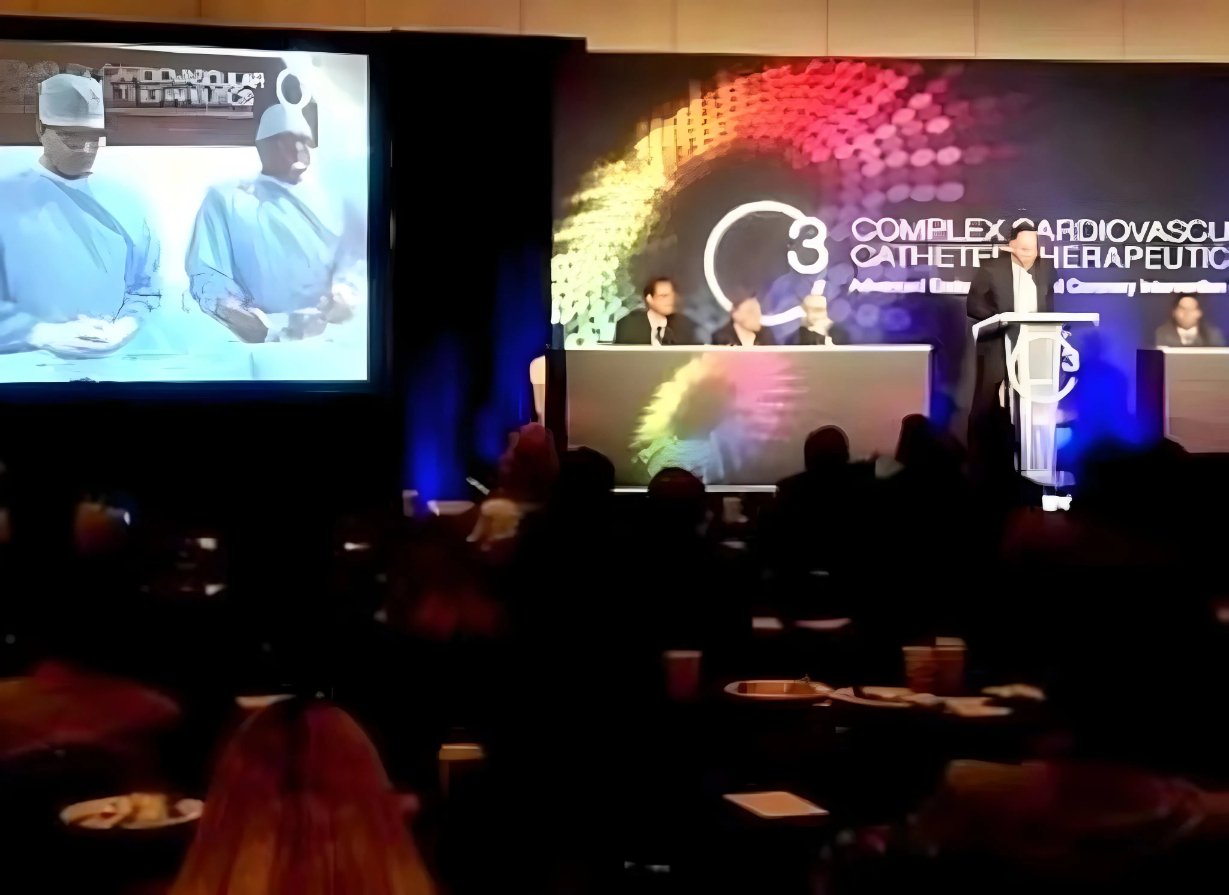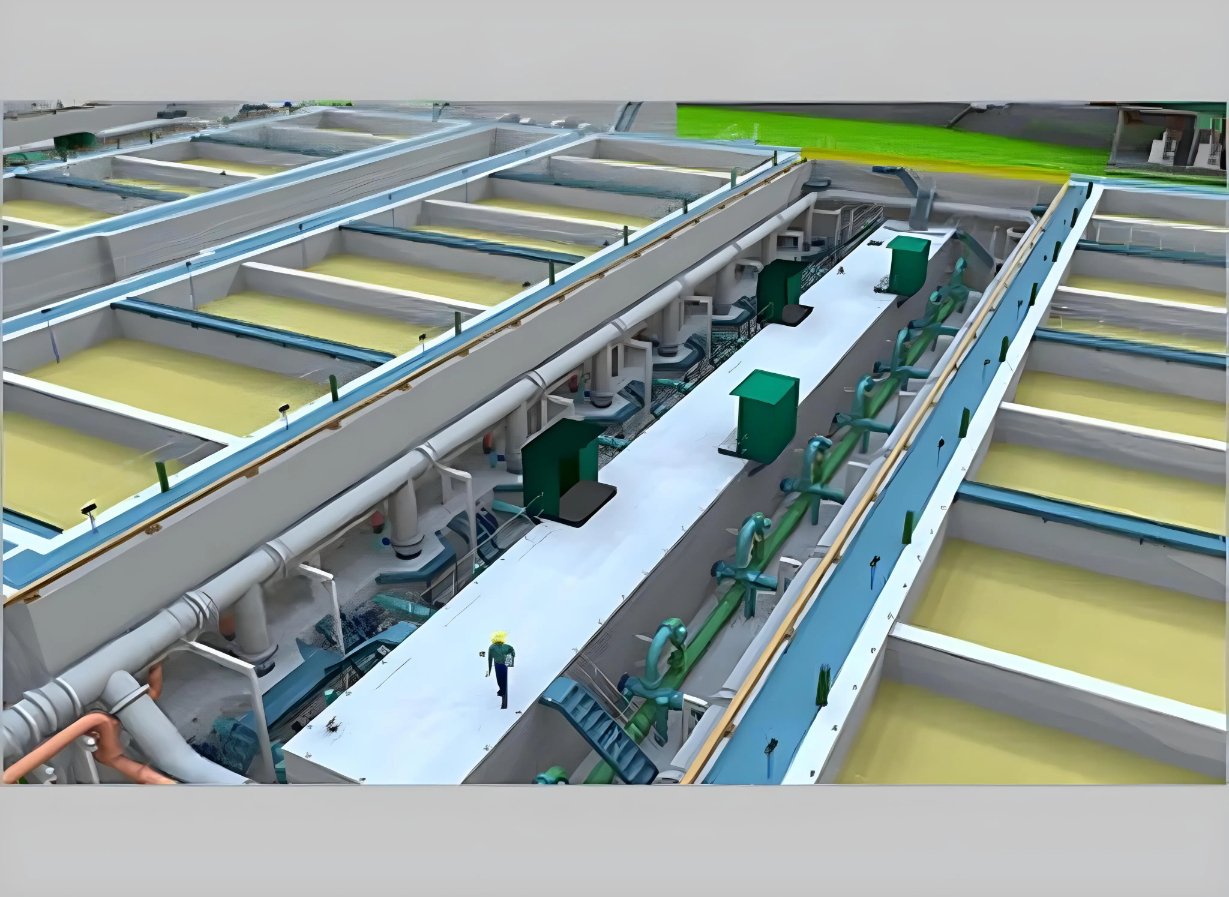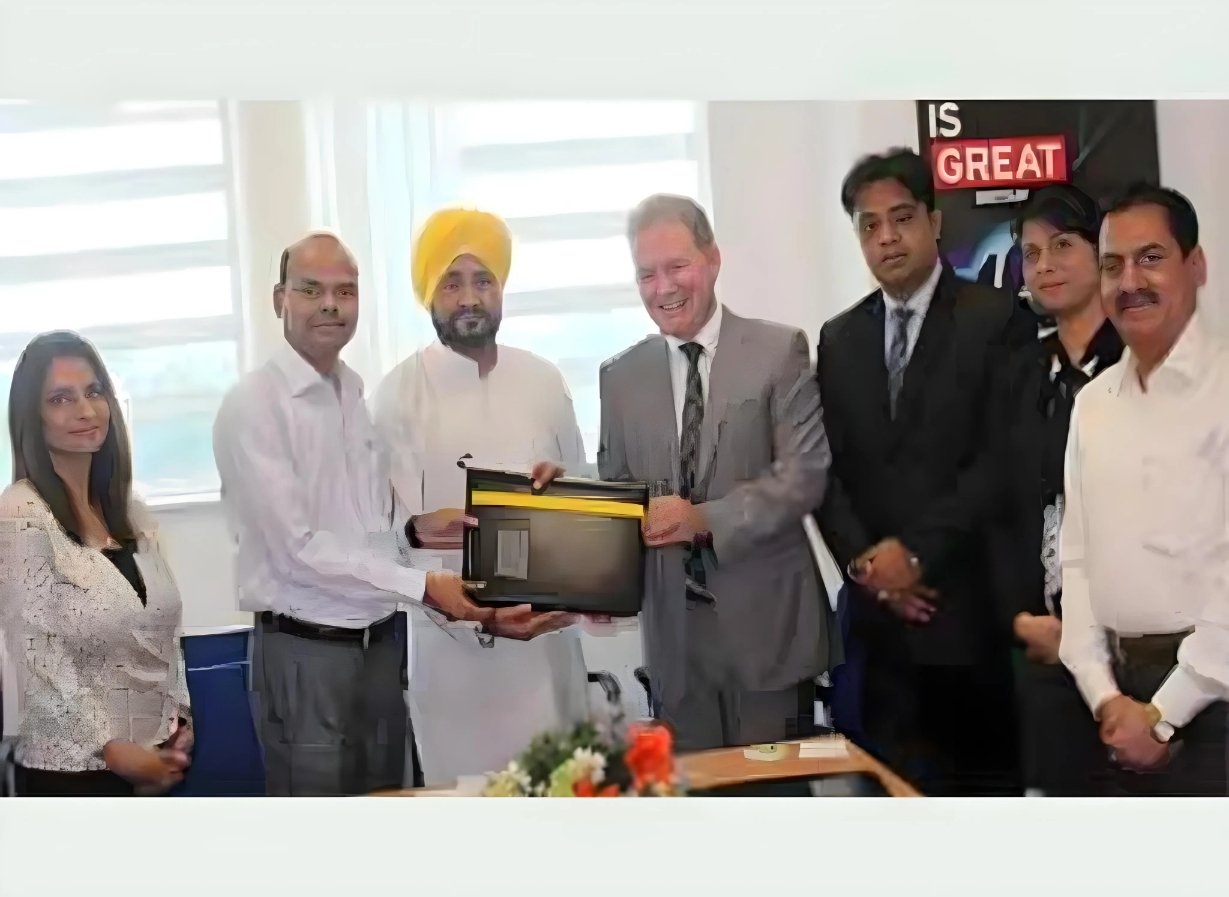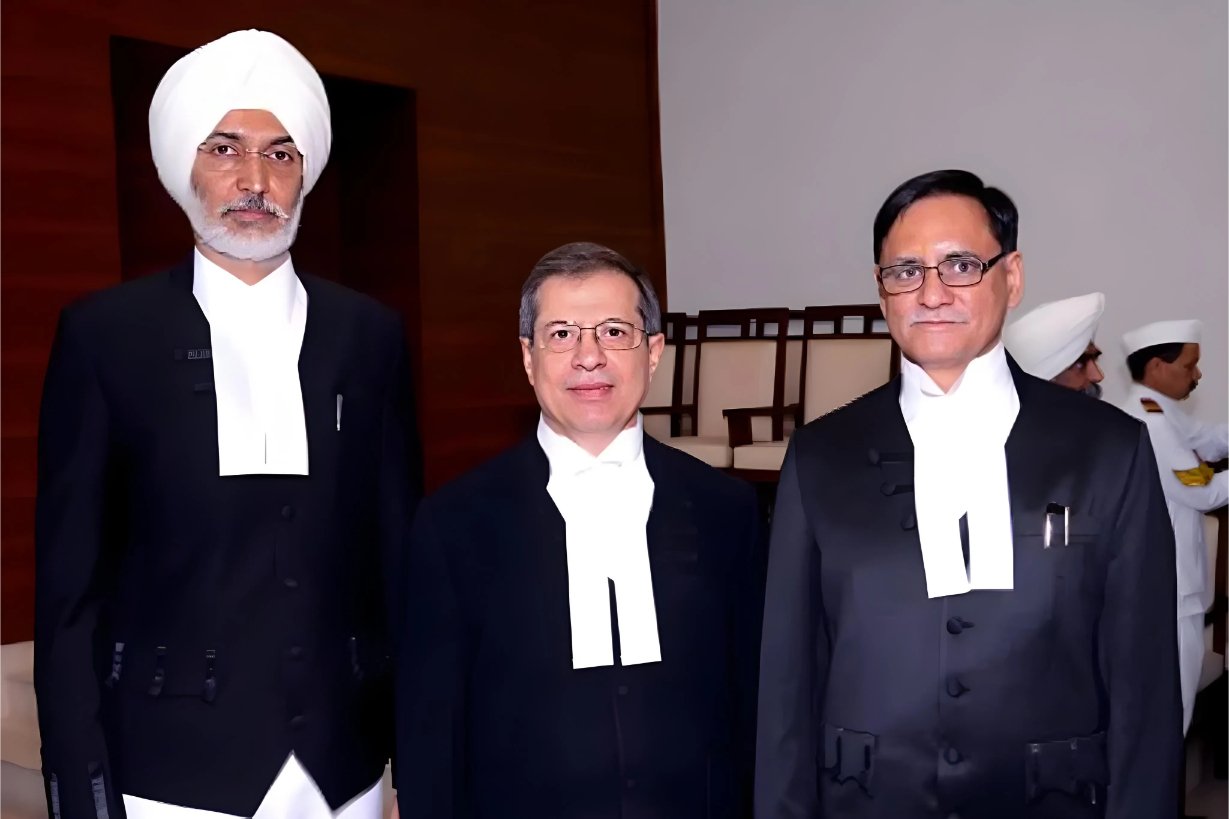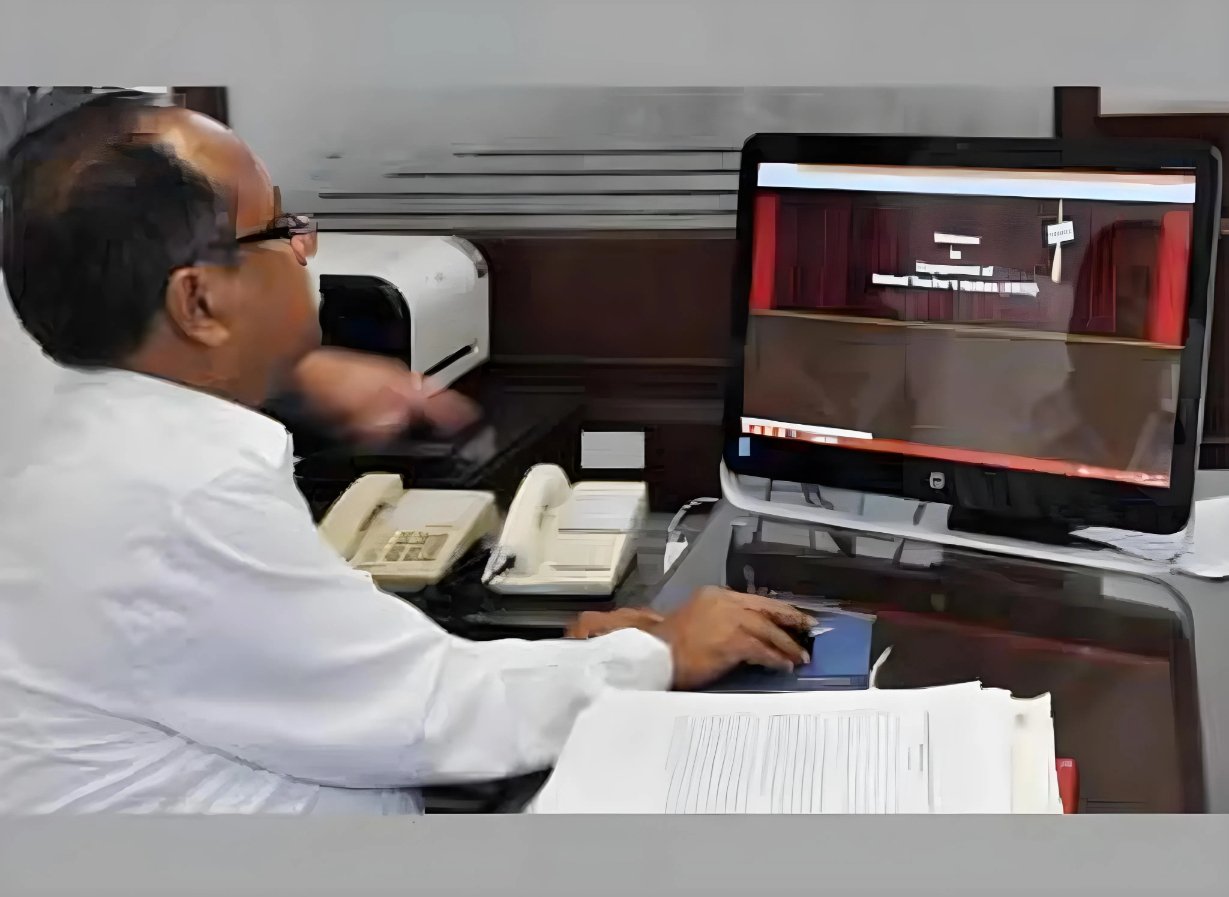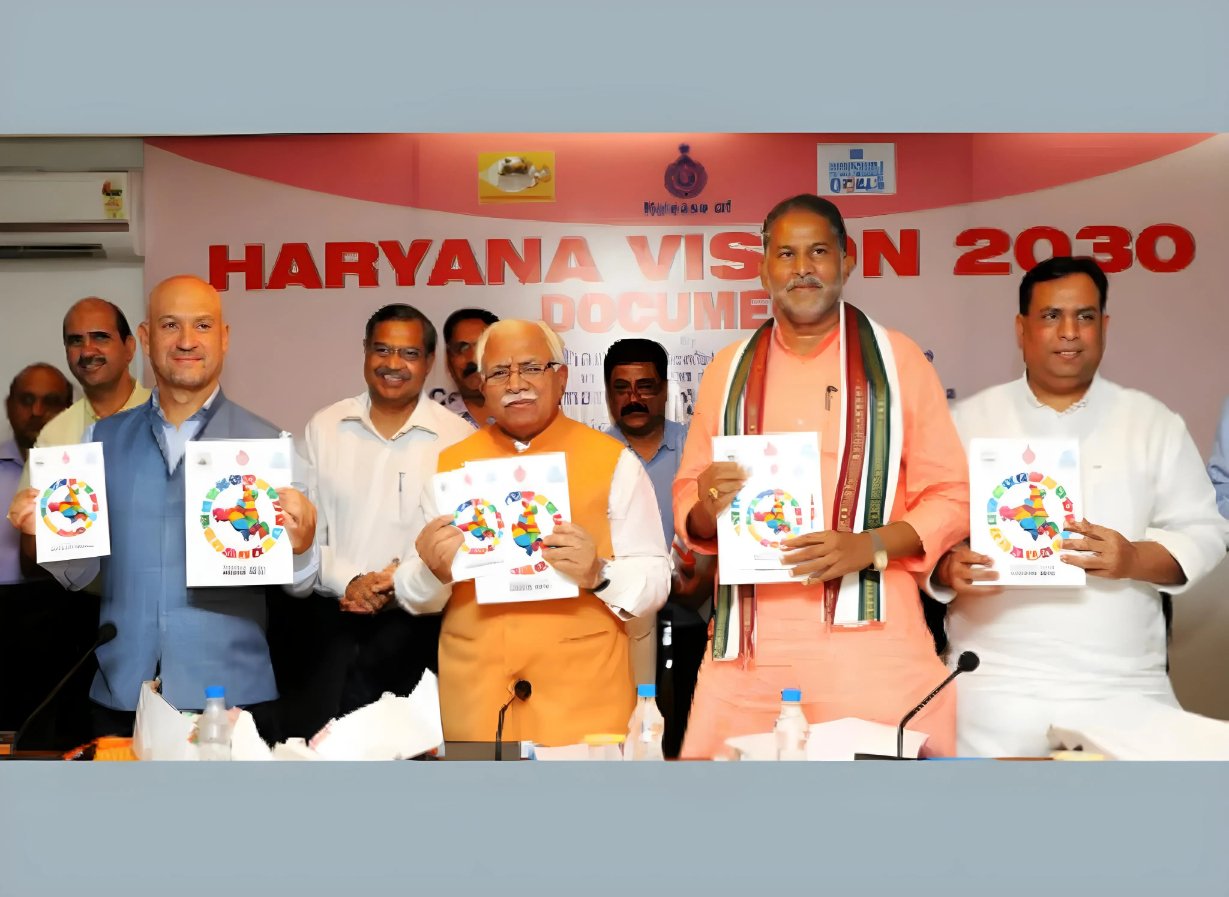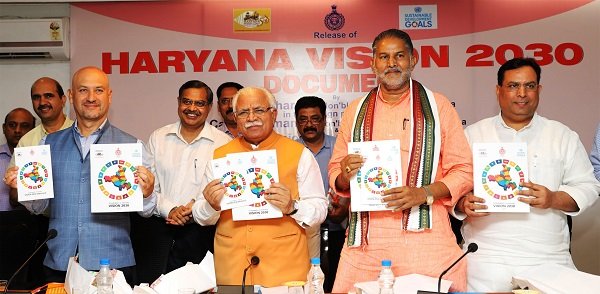Robust tax collections during the first quarter of the current financial year, reining in of organised criminal gangs and drug and sand mafias, dismantling of truck unions and major initiatives to attract investment in the cash-strapped border state were some of the achievements listed out by Capt. Amarinder Singh during the first 100 days of the Congress Government in Punjab led by him.
Looking visibly tired at a briefing, his first major interaction with the Media after taking over reins of the state, he even jokingly asked media persons if they were getting bored with the long list of achievements of his government. He, however, continued, saying “Ik paragraph hey rahay gaya hai.” He was flanked by Chief Secretary Karan Avtar Singh and state Director General of Police Suresh Arora.
Punjab Chief Minister Capt Amarinder Singh, flanked by Chief Secretary Karan Avtar Singh
Photo By: Life in Chandigarh
Commenting on the controversial Satluj Yamuna Link (SYL) canal, which is to take the neighbouring states’ share in the “surplus” Ravi-Beas river waters, he said he was for arriving at a negotiated settlement. He was not against the neighbouring states getting their share, but first Punjab needs to know how much depletion in discharge of river waters has taken place over the years and what the scenario is expected to be in the coming years. “Where will Punjab go, faced with a dangerously depleting water table and a reducing quantum of surface water,” he asserted.
He, however, expressed the hope that a decision would have been taken to sit across the table with Haryana at the intervention of the Centre before the next date of hearing in the case in the Supreme Court.
Warning all organised criminal gangs to surrender, or face the wrath of the state, he said a number of these gangs had been neutralised and other were being pressurised to see reason. Supporting the CM’s words, DGP Arora said during the last three months, out of the 240 members of 49 organised criminal gangs operating in the state, 137 had been arrested and jailed. From among the 12 category ‘A’ gangs, three had been neutralised and seven of the 10 ‘B’ category gangs had been grounded, he added. (What stopped the DGP from performing this feat during the previous Akali Dal-BJP Government, when also he was state police chief, is anybody’s guess).
Strongly supporting the imposition of Goods and Services Tax (GST), Capt Amarinder Singh said Punjab stood to gain Rs 5,000 crore in revenue annually, which would give much needed respite to the debt-ridden state. Clarifying the Congress party’s stand on GST, he said it was only opposed to multiple slabs in the tax structure. When the Congress moved the GST only one 18 percent slab was proposed, he added.
Reiterating the state government’s resolve to come good on all of Congress party’s promises made in the election manifesto, the chief minister informed that the promise of job for every family will be fulfilled and a beginning will be made with a Job Mela to be held sometime in August, where 50,000 youths will be handed over job letters.
He clarified that the Rs 1500 crore earmarked in this year’s budget for farm debt waiver was only for the purpose of repayment of this year’s instalment of farmers’ debt to the banks and that efforts were being made to find solutions for the farmers’ debt with non institutional lenders.
He maintained that despite being controversial, the state government stood by its decision to establish a regulatory authority for private colleges and universities in the state, which will go a long way in standardising curricula and faculty and improving the quality of education in these institutions.
Other important decisions/achievements claimed by state government :
- Entire outstanding farm loans of 7,000-odd families of farmers, who committed suicide over the years, to be borne by state government.
- During first quarter of current financial year, revenue from VAT up 33% – from Rs. 4568 crore to Rs. 6012.96 crore
- Transport fees/taxes collection up of 25%
- Collections from excise auctions up 23.1 percent (increase of Rs. 1016 crore).
- Decision at final stages for infusion of another Rs 20,000 crore investment into second phase of petro chemical complex at Bathinda, for which a meeting has been fixed in New Delhi on July 8.
- Rs 500 crore to be invested in Phase II of Quark City in Mohali
- 16 new specific special industrial parks to come up
- Rs 400 crore hi-tech cycle valley in Ludhiana
- Skills University to come up at Chamkaur Sahib
- Separate Horticulture University at Abohar with PAU Ludhiana mentoring it
- Deptt of Ground Water Management to check alarming depletion of groundwater table
- Rs. 100 crore Road Safety Fund to arrest spiral of fatal road accidents
- Work to start soon on Shahpur Kandi hydroelectric project which will make available an additional 0.78 Million Acre Feet (MAF) of water
- Strong Lok Pal Bill on the anvil to bring Chief Minister, ministers and bureaucrats in its ambit. Lok Pal to be made fully competent to take action as deemed fit.
- New Industrial and Transport policies on anvil
- Governance Ethics and Reforms Commission competent to scrutinize all government transactions above Rs. 50 crore.
- Special Court proposed to Punjab and Haryana High Court for dealing with NRIs and special categories of military personnel.
- Cash transfers directly to bank accounts of genuine beneficiaries of social security schemes
- To further discourage VIP culture, hooters and sirens also to be banned for VIPs
- Crackdown on drug trade by Special Task force (STF), supported by the police and other state agencies, led to registration of 3845 cases under NDPS Act till June 13, 2107, with 4438 people being arrested and more than 58 kgs of heroin recovered, along with other banned substances
- Hassle-free procurement of a record 122 lakh metric tonnes of wheat and prompt payment to farmers
- Another runway on the anvil at the international airport in Mohali
- Free education for all girl students from Nursery to PHD
- 30 percent reservation for women in government jobs on the anvil
- 200 health and wellness clinics across the state to screen children for basic health parameters, genetics, height, weight, etc.
- New government medical college at Mohali
- Universal health insurance scheme for tertiary care



.jpg)
